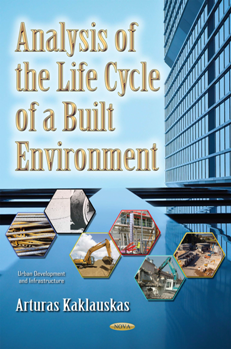Analysis of the Life Cycle of a Built Environment
by Arturas Kaklauskas
English | 2016 | ISBN: 1634855000 | 276 Pages | PDF | 5.2 MB
by Arturas Kaklauskas
English | 2016 | ISBN: 1634855000 | 276 Pages | PDF | 5.2 MB
Various researches on the life cycle of a built environment and/or its composite parts at its micro-, meso- and macro-levels are under development globally. Such researches analyze energetic, technical, technological, economic, legal/regulatory, innovative and microclimatic aspects. However, they ignore the social, cultural, ethical, psychological, emotional, religious and ethnic aspects of a built environment's life cycle. This monograph contains detailed revisions of the research along with theoretical and practical tasks for analyzing the life cycle of a built environment and includes presentations of distinctive examples. The concept of a modern life cycle of a built environment as a model is under discussion. The theoretical and practical analyses presented in this monograph verify that intelligent decision support systems allow different stakeholders to achieve improved work quality results and productivity. Realistically most of the life cycle of a built environment will have both positive and negative features. The mission is to arrive at an equilibrium of pros and cons to optimize the life cycle of a built environment by a system of qualitative and quantitative criteria. Integration of intelligent decision support systems in the life cycle of a built environment is undoubtedly one step in the right direction.
The readers targeted for this monograph include researchers, MSc and PhD civil engineering students and parties involved with construction management and real estate development. Additionally the book could be useful for other scholars along with MSc and PhD students of economics and management and other areas of expertise.



